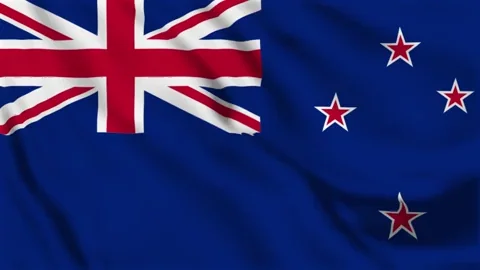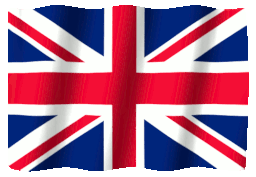
What is GSM Paper? Choose The Right Paper For Your Business
May 15, 2025 Explore Blogs
GSM (Grams Per Square Meter) plays a key role in the right packaging and printing. It is a key metric for understanding the properties of different materials. GSM defines the thickness and strength of the materials, whether they are paper or fabric. The higher the thickness, the higher the GSM, the higher the quality & Durability. People often get confused when choosing the right paper weight and thickness that can perfectly meet the product’s requirements. For restaurants, cafes and the food industry, diverse varieties of food wrapping sheets are used, and the selection of the right GSM paper matters the most to keep the products secure and prevent external damage or accidental fall. In the blog, you can get the information you need regarding GSM paper, its importance, and how to choose the right paper weight/thickness for products. Stay with us and get every minute detail to eliminate all your doubts regarding the GSM paper.
What is GSM Paper?
GSM stands for Grams Per Square Meter and is often referred to as the “weight of paper”. This is also called the Paper’s grammage. The heavier the paper, the higher the number of grams per square meter. Moreover, it is a standard metric used in printing to quantify the weight of paper. For better understanding, it can be described as a GSM value of 100, which means that one square meter of the material weighs 100 grams. So, the high GSM values indicated the better quality and strength of the paper.
Standard GSM Paper Sizes & Measurements
Paper is used widely in various industries for various purposes, from food wrapping to producing letterheads, flyers or brochures. In addition to these, magazines and posters are also produced with paper. Paper is also widely used by packaging companies that promote eco-friendliness and maintain sustainability. But what differs among all of them is the right GSM range. There are different GSM values for every paper type. However, the common preferred GSM sizes are given below:
| GSM Paper Types | Functionality |
| 35-55 GSM | This is the delicate form of paper mostly used in newspapers. |
| 75-90 GSM | It’s lightweight and best suited for notebooks or sketchbooks. |
| 90-100 GSM | This type is preferred for household or office printers. |
| 120-140 GSM | The paper size for promotional posters is perfect for business advertisement without spending a lot of dollars. |
| 210-300 GSM | A bendable paper type that can be used for cold paper cups with enhanced durability. |
| 350-450 GSM | This is the highest GSM paper weight that is used for invitations, business or greeting cards. |
GSM in Printing
The right GSM paper type is important in printing because it determines the weight and thickness of the paper. The thickness of printed paper directly impacts handling and durability. However, the overall look and feel of the printed product is also impacted. The right GSM is crucial to obtain the perfect printing results due to the following factors:
- The surface and texture of the paper thickness can affect ink absorption and drying time, which influence the final print quality.
- Choosing the right GSM ensures the smooth printing and prevents potential risks like paper jams.
- It enhances the perceived value and quality of the product. Right GSM also creates a professional and classy look.
Why Does the Weight Of Paper Matter?
The weight of paper matters because it directly influences the thickness and print quality. A lighter paper with low GSM is more susceptible to ink bleeding or showing through. The right paper weight or GSM is crucial to achieve the desired aesthetics and functionality of a printed object. However, the other reasons explaining why GSM of Paper is important are given below:
Tear & Wrinkle Resistant: High GSM papers are more resistant to tears/folds or wrinkles. This property makes them ideal for custom paper straws that can easily dissolve or tear in the drinks.
Ink absorption: Lighter-weight paper absorbs ink less readily and leads to ink diffusion from the reverse side of the page, which badly affects the clarity of texts and images.
Colour Reproduction: A paper with high thickness provides a consistent and vibrant colour reproduction, specifically when printing images or graphics.
Texture & Finish: Papers with different GSM ranges also have varying textures and finishes. They offer a variety of tactile finishing options, such as for custom tissue paper, glossy touch is added to make it attractive and increase the product presentation.
How To Measure The GSM of Paper
Providing the right measurements or product information to the manufacturer saves you from any hassle or damage to the product. So, different steps are involved in measuring the weight of custom food paper or the right GSM value. Follow the given steps or contact an expert to do so:
- Gather your measuring materials that include a precise scale, a measuring tape and a sample of paper you want to measure.
- Measure the length and width of the paper sample in millimetres and centimetres.
- Calculate the length and width of the paper sample in square centimetres and convert the area from cm² to m². You can get the area by dividing the cm² by 10,000.
- Now, place the paper sample on the scale and record its weight in grams.
- Use the formula: GSM = (Weight of sample in grams) / (Area of sample in square meters)
GSM Of Food Wrapping Sheets
We all understand the varying ranges of GSM, and paper is preferred in almost every industry due to its recyclability and eco-friendly properties. With the increased side effects of plastic, paper is used in food wrapping by restaurants, cafes or bakeries to reduce the carbon footprint and attract eco-loving buyers. There are diverse custom food papers that come in different thickness ranges to accommodate the product needs. A few of them are given below:
Parchment Paper
Custom parchment paper is used to wrap different food items. It comes in different GSM ranges according to the product’s weight. The commonly used GSM value for parchment sheets is 40 to 80. The lighter weight makes it easy to wrap without affecting the quality. However, the standard for parchment paper rolls is 40 GSM. They are coated with silicone and used in baking, lining trays, and wrapping greasy foods.
Greaseproof Paper
The customised greaseproof sheets are manufactured to resist oil and grease penetration. This can be used in wrapping fried food, baked goods and sandwiches. The GSM range for these grease-resistant sheets is 40 to 80 GSM. You can opt for white or brown greaseproof paper for your products.
Wax Paper
The custom wax sheet rolls are coated with different types of wax that provide resistance to moisture. The GSM range for 20 – 40. They are used to wrap sandwiches, cheese and line baking pans or lids to prevent the food from sticking.
Kraft Paper
Kraft paper is commonly used for wrapping different types of food products due to its natural brown colour. The weight ranges from 28 to 120 GSM. This is a strong paper that serves excellently and can also be used for making paper food bags.
Butcher Paper
Butcher paper sheets are used to wrap frozen foods or meats and store them for longer periods. They are also available in different GSM ranges from 40 to 80. These sheets are unwaxed. The paper is sturdy and breathable.
Tissue Paper Sheets
For tissue paper printing, the right GSM is mandatory to get smooth results. They come in a 17 – 40 GSM range. These custom tissue paper sheets are lightweight and thin. They excellently house various food items and are also used in wrapping or cushioning delicate items, or jewellery to enhance their appeal and protection.
However, the standard size range for customised tissue paper is 17 GSM and 28 GSM. These are slightly different. 17 GSM provides a lighter and translucent appearance of the paper and is mostly preferred for products that need high appeal. But 28 GSM adds a traditional look and is a bit thicker than the former one.
Custom Napkins
Customised napkins are also available in different GSM ranges. They are used in food wrapping and decor at restaurants and cafes. The normal range for thinner napkins is from 15 GSM to 40 GSM. However, for thick napkins, it ranges up to 80 GSM. Besides paper, customised printed napkins are also available in fabric material. The GSM range for fabric differs from that of paper. The fabric thickness ranges include:
- Heavyweight Fabric: 500 – 700 GSM.
- Medium Weight Fabric: 190 – 100 GSM.
- Lightweight Fabric: 67 – 140 GSM
Is GSM or PT the Same?
No, GSM and PT are not the same, but both are related to each other. GSM is Grams Per Square Meter and measures the weight of paper, and PT is the Point System that measures the thickness of material. They can be roughly correlated and are not directly interchangeable.
GSM | PT |
| Measures the weight of paper | Measures the thickness of paper. |
| A high GSM value indicates heavier and thicker material. | Each “point” is equivalent to 1/1000th of an inch |
| Influenced by the type and density of paper stock. | Higher PT value indicates a thicker value. |
Factors To Consider While Choosing The Right GSM Paper
There are many factors that need to be considered while choosing the GSM. For everyday printing, a lower GSM, like 800- 100, is often enough. However, higher GSM is preferred for thicker and more durable materials. Here are the factors to consider to get the right GSM of paper according to the weight of your product.
- Intended Use
- Durability
- Perceived Quality
- Cost Effectiveness
- Paper Type
- Target Audience
Wrap Up!
Choosing the right GSM of paper for your food wrapping, packaging, and other decorative purposes is essential for every business to prevent any damage or loss of product. Moreover, the right GSM helps you create a positive brand image and build loyal customers. So, choose the perfect paper for your business and make your products presentable and secure. If you feel any confusion, you can contact us at waxpapers.co.uk to give your products the desired look.


